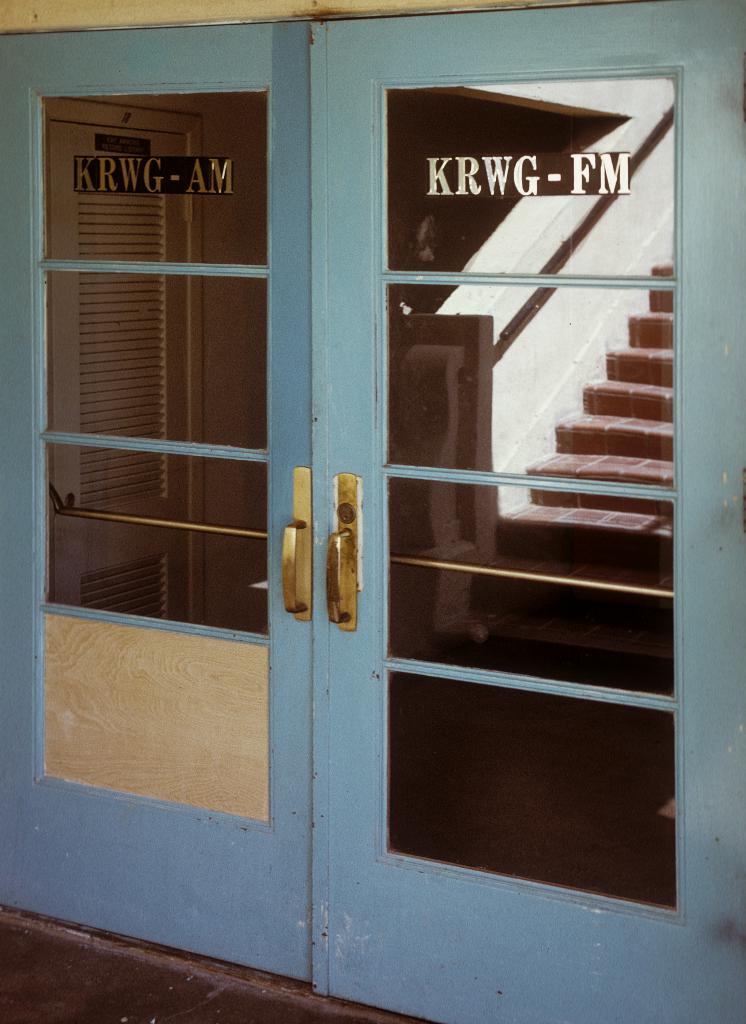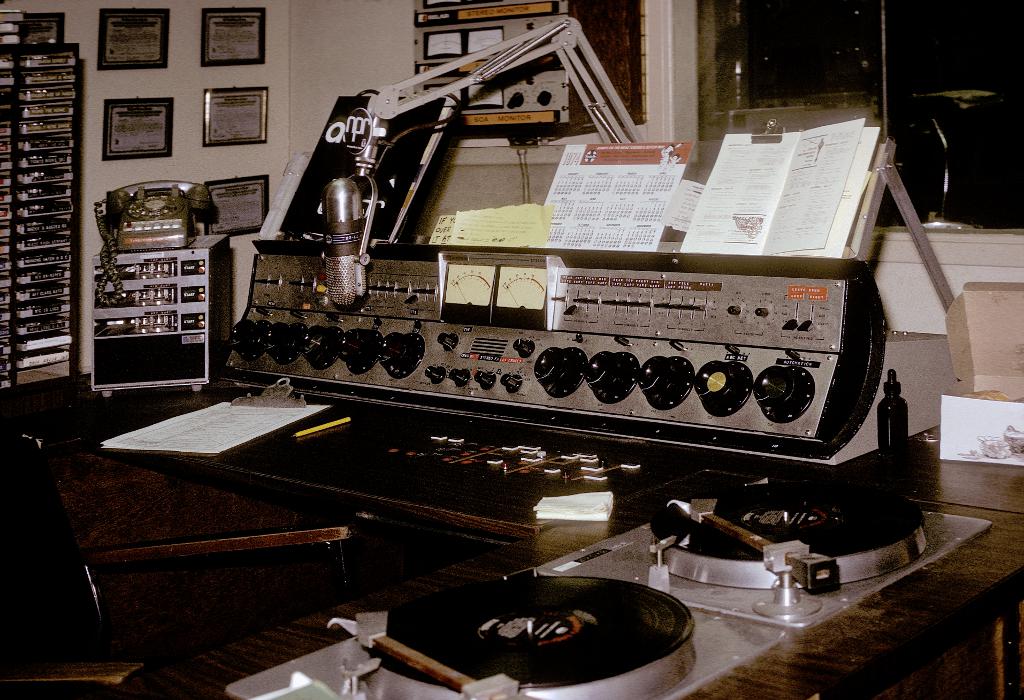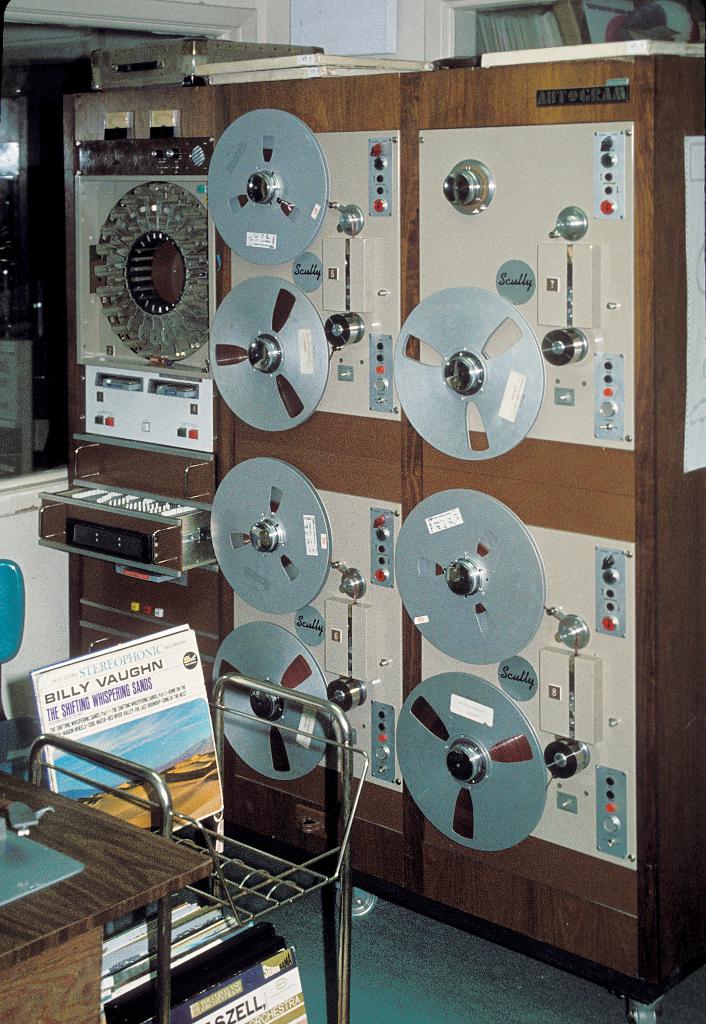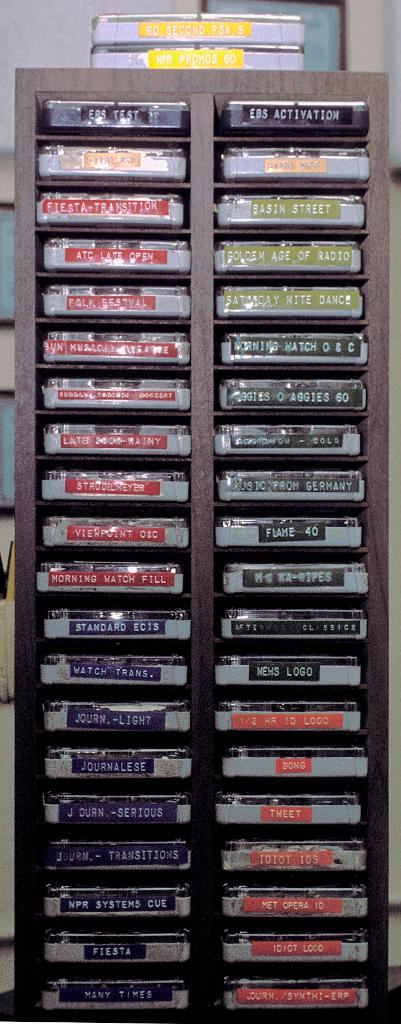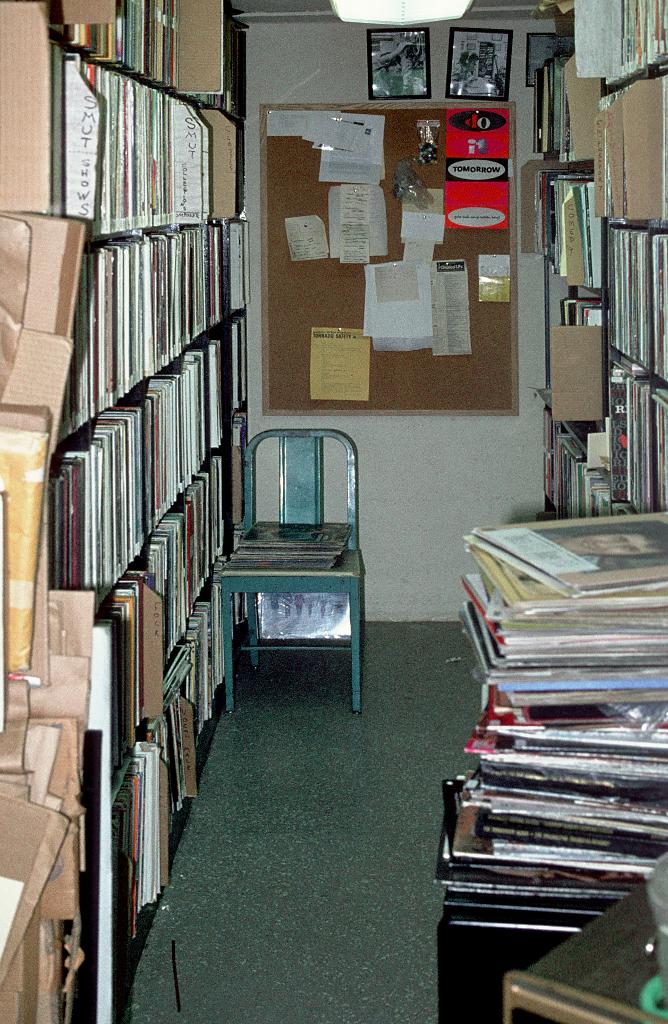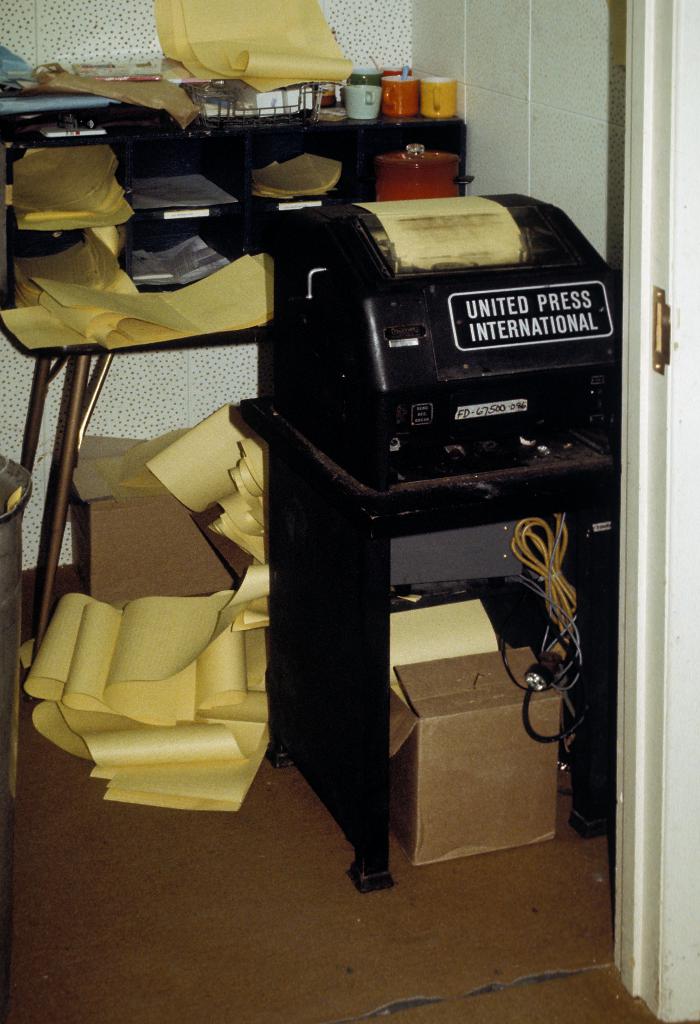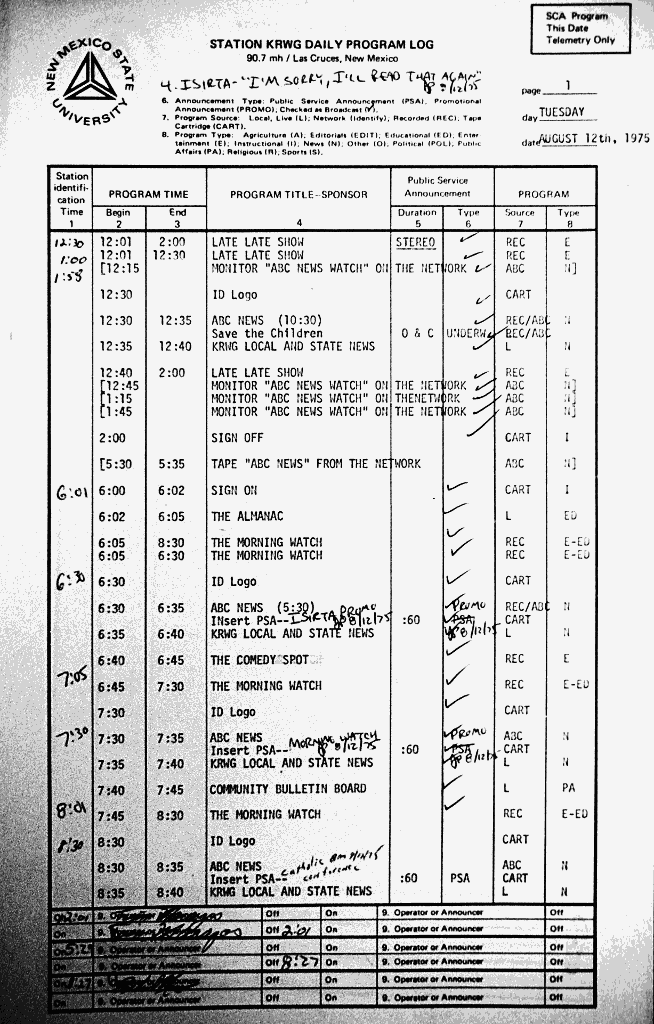My first radio work was at KRWG-AM (later KNMS) and KRWG-FM at New Mexico State University in Las Cruces. I was there from 1973 to 1975. The AM station had a Top-40 formet during the daytimes and a “progressive rock” format at night; it tried to be as much like a commercial station as possible, as good training for “real-world” radio work. The FM station was a National Public Radio affiliate that also played classical music.
October 3, 1974, KRWG-FM celebrated ten years on the air with a three-hour broadcast of station history, interviews, bloopers, and more. I recorded the broadcast on two cassette tapes. I’ve copied them into MP3 files; you can click on the four parts below to hear them. Part One of the broadcast included some early station history. You can read it below.
KRWG-FM 10th Anniversary Broadcast
These files are in MP3 format. (They may need to download first before you hear the sound.)
- Part One (46:10)
- Part Two (45:23)
- Part Three (45:54)
- Part Four (34:34)
About the Photos
I took these photos of KRWG-FM in 1974 and 1975. Click on any photo for a bigger view. Then use your browser’s “Back” button to return to this page.
KOB/KRWG History, 1920-1964
This is a transcript of the KRWG Radio history by Marilyn Hendricks in the 10th Anniversary broadcast. You can hear this history by playing Part One, above, starting at 21:15 (21 minutes, 15 seconds).
(There are photos and more history on the 770 KKOB radio history pages.)
In June of 1920, the first radio station west of the Mississippi River was founded on the small Southwestern campus of the New Mexico College of Agriculture and Mechanical Arts in Las Cruces, New Mexico. Under the direction of Ralph W. Goddard, Dean off the College of Engineering, the station was installed to aid the Engineering Department in its studies. Dean Goddard’s major field was electrical engineering, which explains why he was so interested in and devoted to the station and its equipment.
Dean Goddard and the students who worked with him started from scratch to build one of the finest radio stations of its time. In the early days of the station, Dean Goddard provided for himself as far as the station was concerned. He begged and borrowed the materials he needed to build the small building, furnished mostly with the crude equipment he and the engineering students had made themselves. The original call letters of that station were KOB. KOB received its commercial license April 5th, 1922 after two years of regular daily broadcasting from the shack built by Dean Goddard. Soon after acquiring a license, KOB expanded from just date and time signals and weather forecasts to phonograph music three times each week.
If you can picture an Aggie football game back in 1922, then you can also see Dean Goddard sitting in the stands broadcasting the first live Aggie game over the air. On October 14th, while the Aggies were romping on the field, Dean Goddard was again adding another first to his list of records by transmitting live from the stadium with a portable telephone set.
Dean Goddard worked diligently through the next seven years to make KOB one of the largest and best stations of its kind in the nation. On April 18th, 1924, the first live music was presented by the Aggie Band. From that time on, KOB utilized its equipment for frequent live broadcasts. Faculty members and local guests often spoke on the programs. The Highway Department gave its cooperation to KOB and furnished the station with road condition reports. The Extension Service of the college broadcast agricultural information to the listeners of the Mesilla Valley. By 1926, KOB had hired a studio orchestra which presented concerts every Friday night.
KOB continued to grow in quality and power, and in 1927 it was recognized as the most powerful college station in the world. At that time, it could be received over a 700-mile radius. Dean Goddard had built this pioneer radio into one of the largest stations of any type, but it would soon be forgotten on the campus of New Mexico A&M.
The year 1928 meant a great deal to KOB. In January, KOB was given a temporary reassignment and received later in the year a clear-channel 1180 kilocycle [now kilohertz] frequency. Also on that year, on New Year’s Eve, Dean Goddard died in the KOB station he had constructed. He was accidentally electrocuted by some of the equipment in the transmitter room while making last-minute preparations for a special program scneduled to be aired that night.
Harold Elmendorf and his wife Sara of Las Cruces were friends of Dean and Mrs. Goddard. On that New Year’s Eve night they and other friends were expecting to have dinner and play bridge later with the Dean and his wife. Would you please tell us about that night?
“Well, that night was a pretty horrible experience. Mr. Goddard had sent word that he would be a little late and they could go ahead and have the dinner, which was supposed to be [...] We waited for some time, and still no results. And finally somebody either went from the party to see what was keeping him or somebody from the college told her; I really don’t know which it was. But anyway, at that time we found that he had been found laying on the floor right below some big switches — electrical switches which he had evidently been working with for some reason, and he had been just dead on the floor.”
(You can hear the rest of the interview in Part 1 of the audio recording. It starts at 24:50 and ends at 29:40.}
With the death of Dean Goddard, the life of KOB dwindled. Mr. Elmendorf said that no one really took him seriously, which was confirmed when the station lost its will to survive after the death of its founder and overseer.
“After his death, such a shock that nobody was very much interested in it in the first place, and no one had any interest to the degree that the Dean did. And so when he wasn’t there, the whole thing kind of sloughed [?] off and after a short time, nobody was doing anything with the station.
“This group — small group that was starting a radio station in Albuquerque offered — I’ve forgotten but I don’t know the amount of money, but it was a rather small sum of money, and even that they couldn’t pay. So when they couldn’t meet those payments, they offered a good many hours of radio time that could be used by the college. The whole thing was rather... a song, you might say, for the whole thing that they got. [The] license was the main asset that was transferred, and they’ve built it up to quite a big thing, but the University didn’t get anything to speak of.”
New Mexico A&M neglacted radio broadcasting from Dean Goddard’s death in 1928 until 1952, when the Engineering Department took over once more the task of finding equipment, building a radio station, and getting it a name. The college’s name had been changed a short time before to New Mexico State University. The call letters for the new station were to be KNMS but were again changed to KNMA for the New Mexico Aggies.
KNMA continued to operate under the Engineering Department until 1964, when it was taken over by the Department of Journalism and Mass Communication. In the fall of 1963 the call letters of New Mexico State University-owned radio station were changed again. This time it was in memory of the man who made radio history over 40 years before on the same campus: Raplh Willis Goddard. KRWG was again making history when, in 1964, the FM station was created. It was the first college or university FM station in the state of New Mexico, the third FM station of any type in the state, and one of the first ten educational FM stations in the country. The AM station kept the call letters KNMA until 1965 when they also were dropped for the more convenient KRWG of the FM station.
Once housed in a one-room shack filled with scraps of material Dean Goddard could find, then also in the Engineering building, then again re-established in the inadequate facilities of the Stadium barracks, KRWG is now in a newly-remodeled Milton Hall, the center of the Journalism and Mass Communication department.
Since 1963, KRWG-AM and FM have consistently gained in performance and have earned the respect of New Mexico State University and the entire southwestern area of the United States. Today KRWG is once more one of the largest stations in the nation, boasting a 100,000-watt FM stereo multiplex system which reaches an estimated one million people in New Mexico, in surrouding states, and in Mexico.

